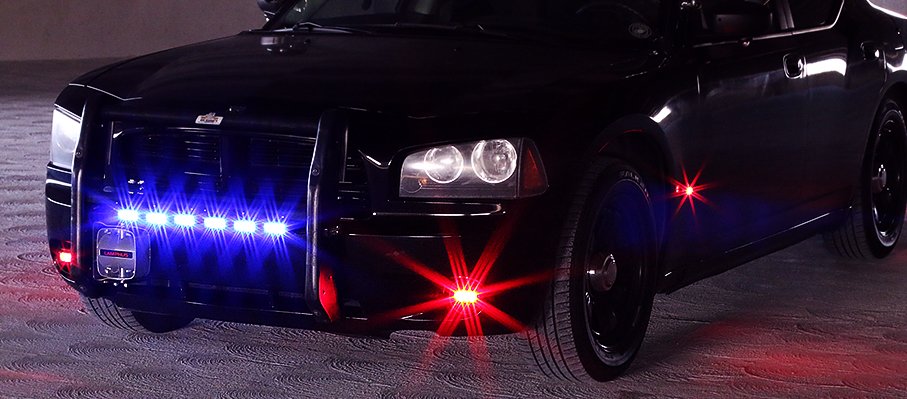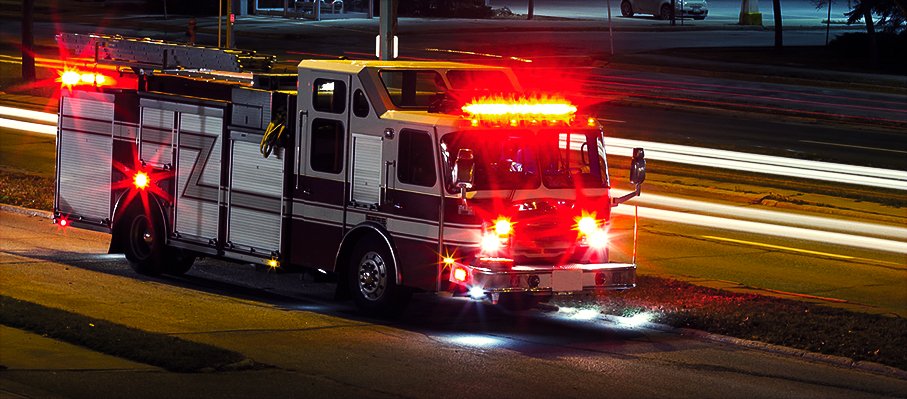In general, emergency vehicles fall into three categories: ambulances, fire trucks and police cars. When responding to an emergency, the red, white or combination red and white lights move constantly. You can probably identify one of these vehicles either by the lights or by their sirens, but there may be laws you didn't know about emergency vehicle lights.
Some emergency vehicles are not as obvious or well-known as those listed above. For example, there are several governmental agencies who send workers in response to crises. These include the Department of Transportation, which inspects commercial vehicles; the Department of Environmental Protection responding to leaks or spills of hazardous materials; the Department of Fish and Wildlife/Forestry enforcing laws in state parks and other lands; and unmarked vehicles equipped with flashing red or blue lights and sirens. Other emergency vehicles fall into the following categories:
- Rescue vehicles including fire trucks, ambulances and command vehicles
- Tow trucks and wreckers
- Highway maintenance equipment.
As a driver, you should always keep a watchful eye out for emergency vehicles. Since sirens are often not used either to protect the integrity of a police procedure or to minimize disturbance to those living in the area, it is best to watch for flashing emergency vehicle lights instead.
Move Over Law
Perhaps the most well-known of the laws that dictate driver behavior around emergency vehicles is the so-called move over law, which is in effect in some form in every state in the U.S. as well as throughout Canada. In general, these statutes mandate that drivers must slow down and get out of the lane closest to a stationary emergency vehicle that is flashing its emergency vehicle lights and traveling in the same direction as the driver.
There are some variations on the law about emergency vehicle lights. For instance, Hawaiians are required to move two lanes over if it is possible to do so. In Montana, on highways where the speed limit is more than 50mph, drivers are required to slow to 20mph below the speed limit. In the District of Columbia, there are no move over laws at all.

Following Emergency Vehicles
Most states also have laws in the books regarding procedures for following police, fire, paramedic and other emergency vehicles. In general, you should not get any closer than 500 feet from an emergency vehicle. Also, many states prevent drivers from entering a city block if emergency vehicles are involved in activities there. A good rule of thumb is that if you see vehicles with their lights flashing, steer clear of the area to allow the critical work to be done.

Laws Governing Emergency Vehicle Lights
While it may be too time consuming to list the laws about emergency lights for every state, an examination of laws in New York, California, Illinois and Florida will hopefully provide a general sense. In New York, police cars must use red and white lights. They can also be equipped with one or more blue, combination blue and red or combination blue, red and white lights. Blue and blue can only be used for rear projection such as LED deck lights. New York ambulances and fire trucks can use red and white lights but are prohibited from displaying blue ones. Vehicles used for warning, hazard or cautionary purposes are required to have one or more amber lights.
The laws are different in California. In that state, police vehicles are required to use one steady burning red warning lamp that can be seen from at least 1,000 feet in front of the emergency vehicle. Police cars can also be equipped with red flashing, revolving or steady lights on their sides or rears. Blue lights are also permissible. Ambulances and fire trucks must comply with the same statute regarding the red emergency warning lamp. In addition, red warning lights can be used on the sides, front and rear of the vehicles. Warning and caution signs must be marked with amber lights, and wreckers and tow trucks must display flashing amber lights.
In Illinois, police vehicles must be equipped with red or white emergency lights that rotate, oscillate or flash. LED lights are allowed. Ambulances and fire trucks are subject to the same statute. Caution and hazard vehicles, tow trucks and construction trucks may use amber lights that oscillate, rotate or flash.
In the Sunshine State, all police vehicles must use blue ”cop lights.“ Vehicles in Florida used for undercover work as well as the personal cars of investigators and police commissioners can also be equipped with these blue lights. Publicly or privately owned fire trucks and ambulances must use red warning lights. Furthermore, volunteer fire fighters are allowed to have red warning lights on their personal vehicles. Medical technicians and physicians can also equip their personal cars or trucks with red emergency warning lights, but they can only be used when responding to a crisis at a hospital at which the first responder has privileges.
The laws governing emergency vehicles and the lights that announce their presence are probably a good deal more complicated than you ever realized. The next time you see the flashing lights of a police car, fire truck or highway repair vehicle, you may now have a better understanding of the vital purpose these signals fulfill. Regardless of what part of the country you may be in, these trucks and cars perform a critical function that all citizens should heed.



Post Comments
You must be logged in to post a comment.
click here to login